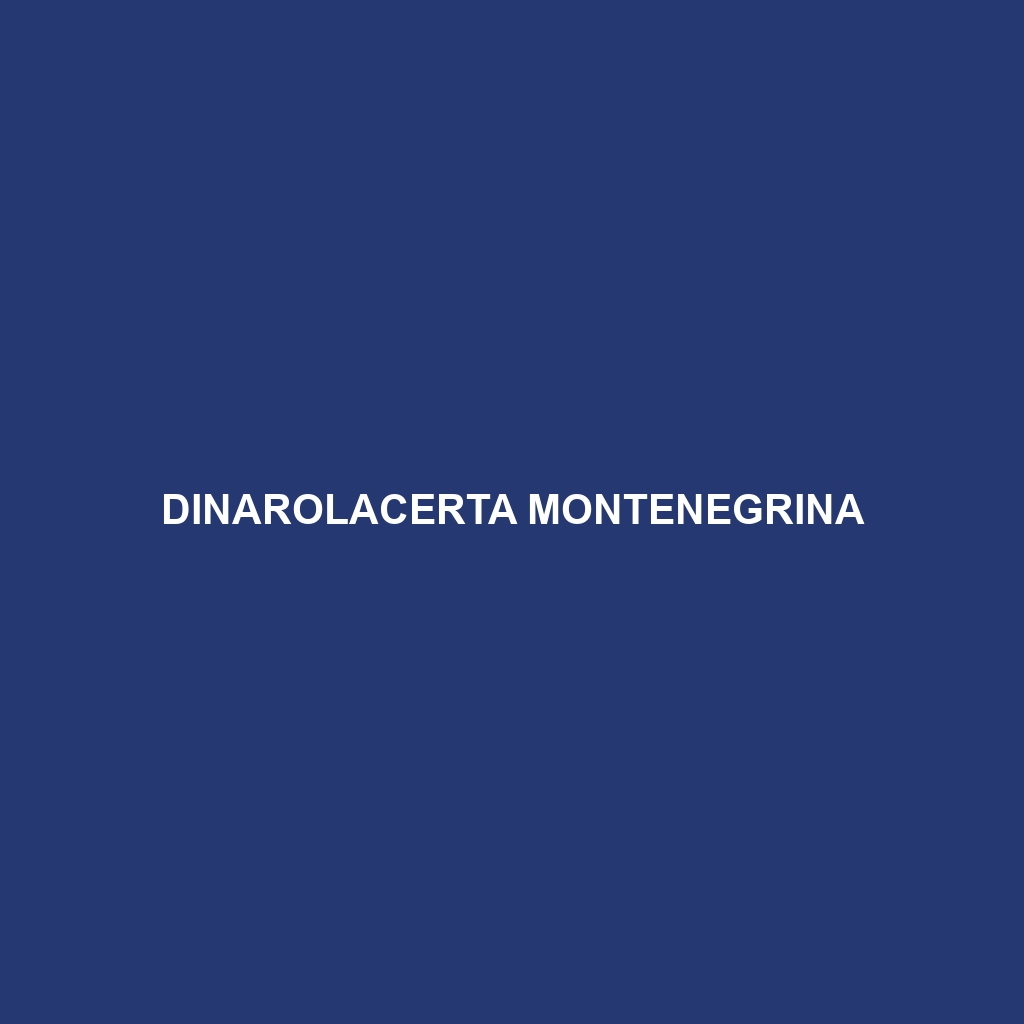Dinarolacerta montenegrina: A Comprehensive Overview
Common Name: Dinarolacerta montenegrina
Scientific Name: Dinarolacerta montenegrina
Habitat
Dinarolacerta montenegrina, commonly known as the Montenegrin lizard, primarily inhabits the rocky and mountainous terrains of Montenegro and neighboring regions in the Balkans. These lizards thrive in diverse environments, including limestone cliffs, forest edges, and scrubland, where they can find ample cover and basking spots. Their preference for high-altitude areas makes them a prominent feature of the local fauna.
Physical Characteristics
This species typically reaches a size of about 25 to 30 centimeters in length. The Dinarolacerta montenegrina exhibits a stunning array of colors, ranging from vibrant greens to earthy browns, allowing it to blend seamlessly with its natural surroundings. Distinctive features include a slender body, elongated limbs, and a pointed snout, which further contribute to its adaptability in rocky habitats.
Behavior
Dinarolacerta montenegrina is diurnal, meaning it is most active during the day. These lizards display a variety of intriguing behaviors, such as basking on sunlit rocks and engaging in territorial displays, particularly during the breeding season. Their agile and quick movements make them efficient foragers as they dash between rocks and vegetation in search of food.
Diet
The diet of Dinarolacerta montenegrina is primarily insectivorous, consisting of a wide range of invertebrates, including ants, beetles, and small caterpillars. This species plays a critical role in controlling insect populations within its habitat. They hunt actively, utilizing their keen eyesight to spot prey from a distance.
Reproduction
Reproductive activities for Dinarolacerta montenegrina typically occur in the spring as temperatures begin to rise. Females lay clutches of usually 3 to 10 eggs in well-drained soil or rock crevices, ensuring safe incubation. The hatchlings emerge during the late summer and are independent from birth, showcasing the species’ effective reproductive strategy.
Conservation Status
The current conservation status of Dinarolacerta montenegrina is listed as vulnerable due to habitat loss and climatic changes affecting its mountainous environment. Conservation efforts are essential to safeguard this unique species and its habitat from further degradation.
Interesting Facts
Dinarolacerta montenegrina is known for its remarkable adaptability and resilience in harsh environments. Interestingly, these lizards have developed a unique method of communication involving a series of head bobs and tail flicks, which are often used during mating rituals and territorial disputes.
Role in Ecosystem
As a key insectivore, Dinarolacerta montenegrina plays an essential role in its ecosystem by helping to maintain the balance of insect populations. Additionally, they serve as prey for larger predators, contributing to the food web dynamics and biodiversity of their natural habitat.
